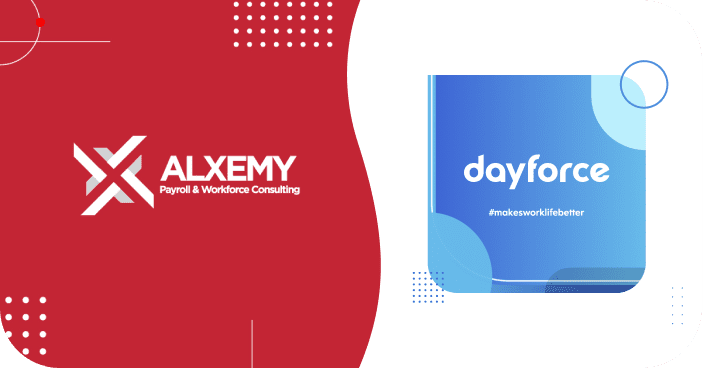Selecting and implementing an enterprise HCM Software stack can be a complex and daunting task. These days, payroll and HR software is not just used by a few super users who administer the systems, rather they touch on every employee in the organisation.
Full-suite HCM software is likely to be used for some or all of the following:
- Applying for a job within your organisation
- The onboarding journey
- Receiving a work schedule or shift pattern
- Logging work hours
- Getting paid and receiving a payslip
- Learning new things
- Understanding career pathways
- Moving into new roles
- Leaving the organisation
- Reporting on accurate salary and wage expenses
- Reporting to the executives and the board
- Ensuring compliance
- and much more . . .
The modern workforce expects everything to be live and in real-time – always available online, on mobile, and even via natural language interaction. If you don’t choose the right software for your business, you risk being left behind and losing your competitive advantage.
Here are our five tips to ensure you have all knowledge bases covered and are adequately prepared before seeking out a vendor or publishing an RFP, RFI or tender.
1. Understand the big picture
Selecting the right Payroll, WFM and HCM software cannot be done in silos or in isolation. It’s essential all departments work closely together so each one understands the needs of the other. Why? Because of how deep the tentacles of these software suites reach into all facets of an organisation or business.
Understanding the whole software picture – the wider business process flow of all touchpoints – is a must. Questioning: Who will be interacting with it? At which point of the workflow? What will they be doing? Solutions must be designed with the least frictional pathway in mind to ensure each person in line has exactly what they need to perform their part of the job.
Gaining a deep understanding of the subject matter and software ecosystem is equally important. All too often we see RFPs that are clearly written by a single department who have little knowledge of the “outside world” or even the expected business processes involved with HCM software.
At a very minimum, a system architecture diagram of the current and desired future state should be drawn. It should feature use cases demonstrating how different people will interact with the software and with each other through the software.
2. Get buy-in from all the stakeholders
Making sure that everyone who needs to be, is on board with the project and plays an active part in it. Every person, company, and organisation is different. Most people don’t like mandates and prefer to be taken on a journey. The thing to remember here is that journeys aren’t always easy, but they should be exciting and have a defined destination. It is important to have:
- Have a clear understanding and be able to articulate the key business goals you wish to achieve
- Describe the benefits of the end result
- Be honest – people need to understand the size and weight of these projects upfront
- Appoint champions who will be on your team and ensure they bring others along with them
3. Understand your budget
There is nothing worse than shaking hands on a Ferrari when you only have the budget of a Golf. It’s not a good experience for the buyer or the seller. Knowing indicatively what sort of money your organisation is prepared to spend on a new system is paramount.
Budget is normally one of the first things that a vendor needs to be aligned with, otherwise everyone’s time gets wasted. I was once in a demo where a whole group of sales staff were flown to a different city and halfway through the demo, the prospect asked what such a solution would roughly cost. When the indicative price was 10x than what their budget was, the demo was stopped right there and then.
The above is an extreme example of budget misalignment, but it’s important to consider at the very least what class or tier of system you are pricing towards. Why? Because it will also impact the sort of vendors you will want to reach out to.
It is not always the case that budget is a deciding factor, and it should only form part of the decision-making process, but it cannot be hugely off the mark.
4. Get into the detail (but not too much)
At this point, you should now be in a position to dig a little deeper into the various system requirements. For this we would recommend a highly skilled all-round business analyst, ideally with some domain experience in enterprise Payroll, WFM and HCM software.
This is essentially the first part of the journey, so ensuring you make everyone feel included sets the tone. No one is too important or too insignificant to not be involved in this process.
Engage everyone. Have open conversations about what they like and don’t like about the current solution, what they envisage in the future, and what a blue-sky solution would look like to them. Pull out the stops, get creative and incorporate out-of-the-box thinking. Not everything may be possible but it’s certainly good to brainstorm.
Now’s the time to speak with the SMEs and make sure that all legal, compliance, business process and procedures are captured. There are certain things that software will need to cater to and are non-negotiable. That said, bear in mind that just because things have always been done a certain way, it doesn’t mean they should be. There should be freedom and a safe environment to challenge people’s thinking – even the CEO!
5. Understand the strategic direction
Business strategy can – and should – influence the sort of software vendor you choose to partner with. Ideally, their strategy and goals will align with your own.
Here are some examples of what we mean:
- Is your IT strategy cloud-first, infrastructure as a service or in-house?
- Are you planning future acquisitions, growth, selling of certain arms of the business etc.?
- Who will be working for you in the future and how can you attract the best talent?
- Do you intend on outsourcing all or some of the payroll-related tasks?
- Is your organisation an early adopter or a laggard?
- How important is user experience in your organisation?
- Do you intend to hire from overseas?
- Is there a language barrier?
- Is there soon to be a major shift in how you work? For example, hybrid, WFH, global teams etc.
Ensuring that a vendor aligns with your business strategy, makes it more likely that your business will be able to shape and grow with this new software, rather than having to seek out new software in three-to-five years’ time.
Selecting and implementing an enterprise HCM Software stack can be a complex and daunting task. These days, payroll and HR software is not just used by a few super users who administer the systems, rather they touch on every employee in the organisation.
Full-suite HCM software is likely to be used for some or all of the following:
- Applying for a job within your organisation
- The onboarding journey
- Receiving a work schedule or shift pattern
- Logging work hours
- Getting paid and receiving a payslip
- Learning new things
- Understanding career pathways
- Moving into new roles
- Leaving the organisation
- Reporting on accurate salary and wage expenses
- Reporting to the executives and the board
- Ensuring compliance
- and much more . . .
The modern workforce expects everything to be live and in real-time – always available online, on mobile, and even via natural language interaction. If you don’t choose the right software for your business, you risk being left behind and losing your competitive advantage.
Here are our five tips to ensure you have all knowledge bases covered and are adequately prepared before seeking out a vendor or publishing an RFP, RFI or tender.
1. Understand the big picture
Selecting the right Payroll, WFM and HCM software cannot be done in silos or in isolation. It’s essential all departments work closely together so each one understands the needs of the other. Why? Because of how deep the tentacles of these software suites reach into all facets of an organisation or business.
Understanding the whole software picture – the wider business process flow of all touchpoints – is a must. Questioning: Who will be interacting with it? At which point of the workflow? What will they be doing? Solutions must be designed with the least frictional pathway in mind to ensure each person in line has exactly what they need to perform their part of the job.
Gaining a deep understanding of the subject matter and software ecosystem is equally important. All too often we see RFPs that are clearly written by a single department who have little knowledge of the “outside world” or even the expected business processes involved with HCM software.
At a very minimum, a system architecture diagram of the current and desired future state should be drawn. It should feature use cases demonstrating how different people will interact with the software and with each other through the software.
2. Get buy-in from all the stakeholders
Making sure that everyone who needs to be, is on board with the project and plays an active part in it. Every person, company, and organisation is different. Most people don’t like mandates and prefer to be taken on a journey. The thing to remember here is that journeys aren’t always easy, but they should be exciting and have a defined destination. It is important to have:
- Have a clear understanding and be able to articulate the key business goals you wish to achieve
- Describe the benefits of the end result
- Be honest – people need to understand the size and weight of these projects upfront
- Appoint champions who will be on your team and ensure they bring others along with them
3. Understand your budget
There is nothing worse than shaking hands on a Ferrari when you only have the budget of a Golf. It’s not a good experience for the buyer or the seller. Knowing indicatively what sort of money your organisation is prepared to spend on a new system is paramount.
Budget is normally one of the first things that a vendor needs to be aligned with, otherwise everyone’s time gets wasted. I was once in a demo where a whole group of sales staff were flown to a different city and halfway through the demo, the prospect asked what such a solution would roughly cost. When the indicative price was 10x than what their budget was, the demo was stopped right there and then.
The above is an extreme example of budget misalignment, but it’s important to consider at the very least what class or tier of system you are pricing towards. Why? Because it will also impact the sort of vendors you will want to reach out to.
It is not always the case that budget is a deciding factor, and it should only form part of the decision-making process, but it cannot be hugely off the mark.
4. Get into the detail (but not too much)
At this point, you should now be in a position to dig a little deeper into the various system requirements. For this we would recommend a highly skilled all-round business analyst, ideally with some domain experience in enterprise Payroll, WFM and HCM software.
This is essentially the first part of the journey, so ensuring you make everyone feel included sets the tone. No one is too important or too insignificant to not be involved in this process.
Engage everyone. Have open conversations about what they like and don’t like about the current solution, what they envisage in the future, and what a blue-sky solution would look like to them. Pull out the stops, get creative and incorporate out-of-the-box thinking. Not everything may be possible but it’s certainly good to brainstorm.
Now’s the time to speak with the SMEs and make sure that all legal, compliance, business process and procedures are captured. There are certain things that software will need to cater to and are non-negotiable. That said, bear in mind that just because things have always been done a certain way, it doesn’t mean they should be. There should be freedom and a safe environment to challenge people’s thinking – even the CEO!
5. Understand the strategic direction
Business strategy can – and should – influence the sort of software vendor you choose to partner with. Ideally, their strategy and goals will align with your own.
Here are some examples of what we mean:
- Is your IT strategy cloud-first, infrastructure as a service or in-house?
- Are you planning future acquisitions, growth, selling of certain arms of the business etc.?
- Who will be working for you in the future and how can you attract the best talent?
- Do you intend on outsourcing all or some of the payroll-related tasks?
- Is your organisation an early adopter or a laggard?
- How important is user experience in your organisation?
- Do you intend to hire from overseas?
- Is there a language barrier?
- Is there soon to be a major shift in how you work? For example, hybrid, WFH, global teams etc.
Ensuring that a vendor aligns with your business strategy, makes it more likely that your business will be able to shape and grow with this new software, rather than having to seek out new software in three-to-five years’ time.
Closing thoughts
Having a solid foundation when embarking on such a critical project is hugely important. There is no point penny pinching or attempting to cut corners, because you’ll pay for it one way or another!






